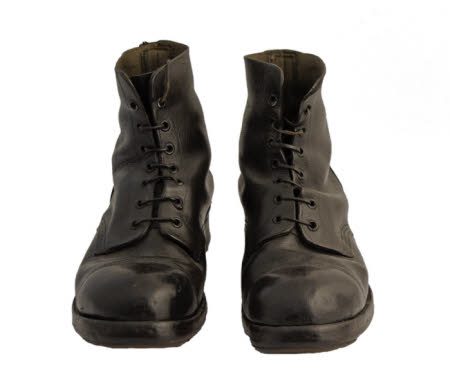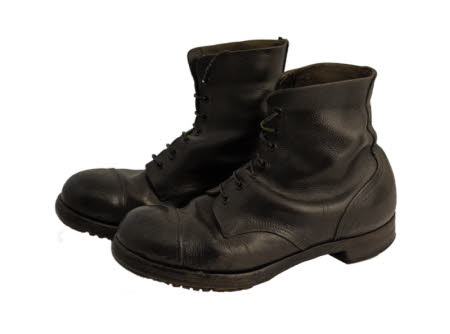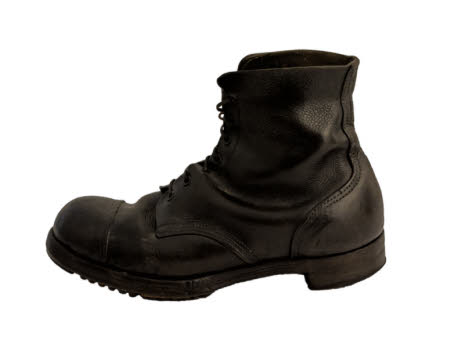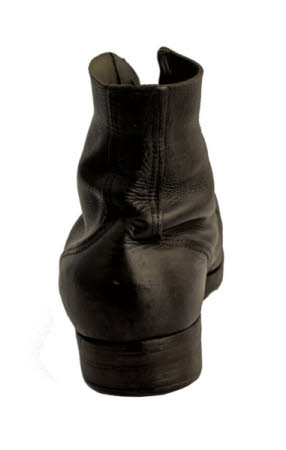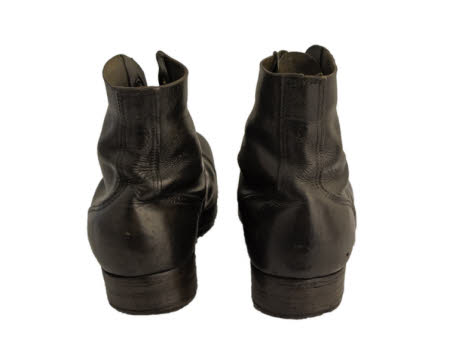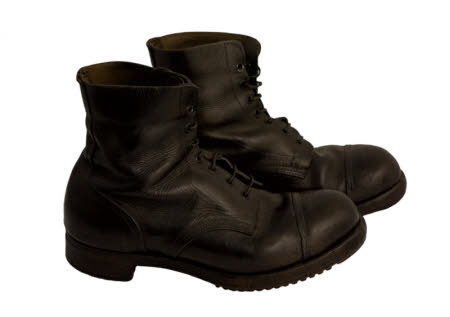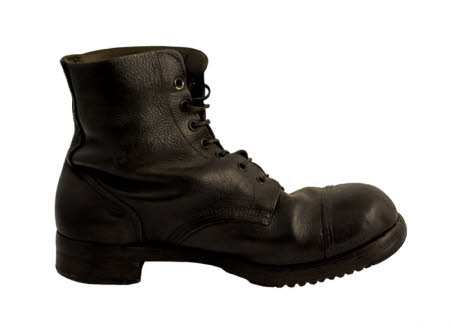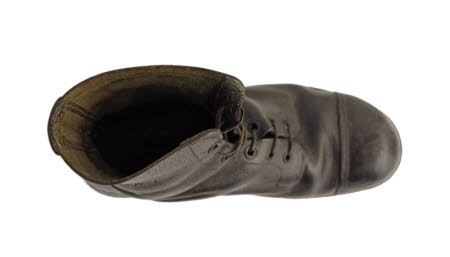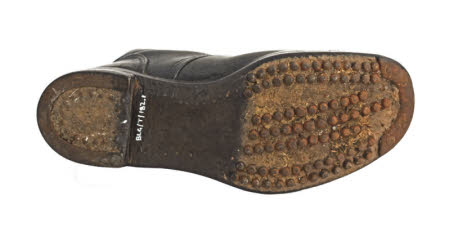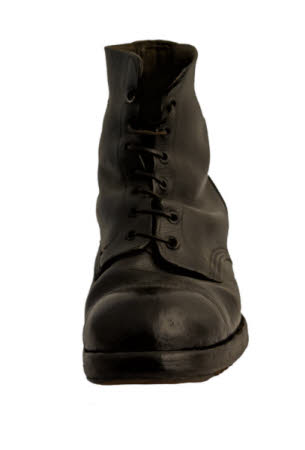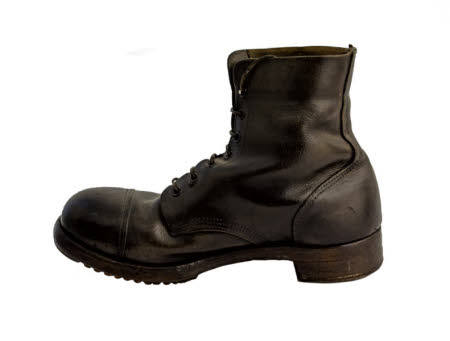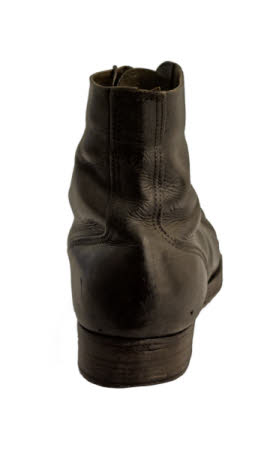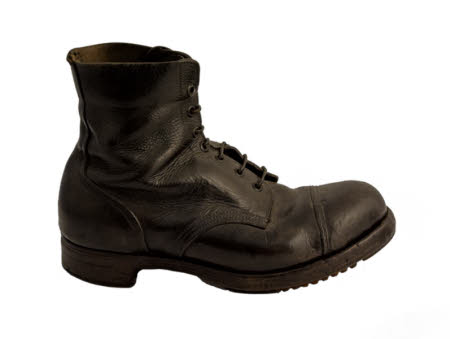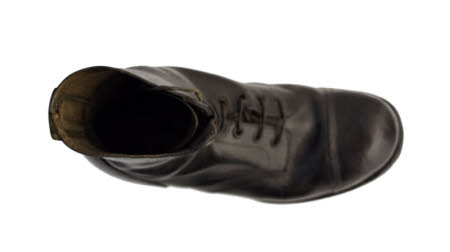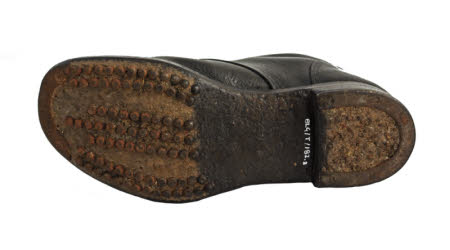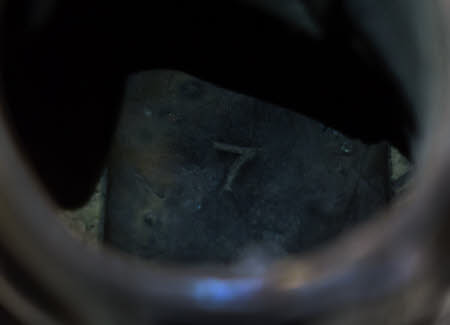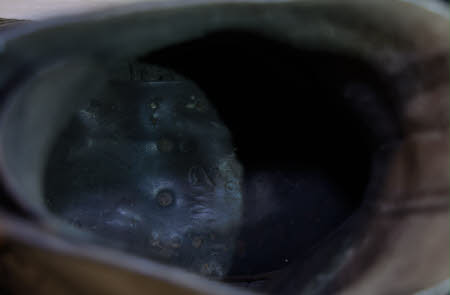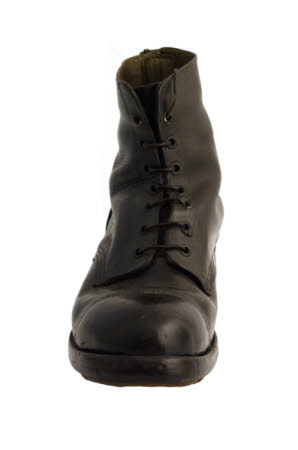Boots
Category
Costume
Date
1914 - 1918
Materials
Leather
Order this imageCollection
Mr Straw's House, Nottinghamshire
NT 747715
Caption
Ammunition boots, also known as Boots, ankle, General Service (BGS), were the standard footwear for the British Army from the late 1880s until the late 1950s. Ammunition boots were unlined ankle-boots with leather laces, iron help-plate and toe-plate, and an iron-studded leather sole. The vamp (front) and quarters (sides) were often made of a contrasting type of leather than the toe case (toe cap) and counter (heel cap), one made of "pebble-grained" (dimpled) leather and the other of smooth leather. They were designed to be hard-wearing and long-lasting rather than comfortable. The hobnail-studded soles made a loud crunching sound when the wearer was marching, earning them the nickname "crunchies". Vehicle drivers wore boots without hobnails because they would damage the pedals and create sparks. This was extended to armored vehicle crews in the Royal Tank Regiment and Reconnaissance Corps in 1942, as well as to the crews of waterborne craft of the Royal Army Service Corps in 1943. Specialists and ammo stores men were issued regular ammo boots with rubber heels and rubber crepe soles that lacked the hobnails and steel heel- and toe-plates. This was to avoid creating sparks near flammable or explosive stores, like gunpowder or gasoline. Commandos were issued them to make it easier for them to move silently.
Summary
A pair of World War I ammunition boots.
